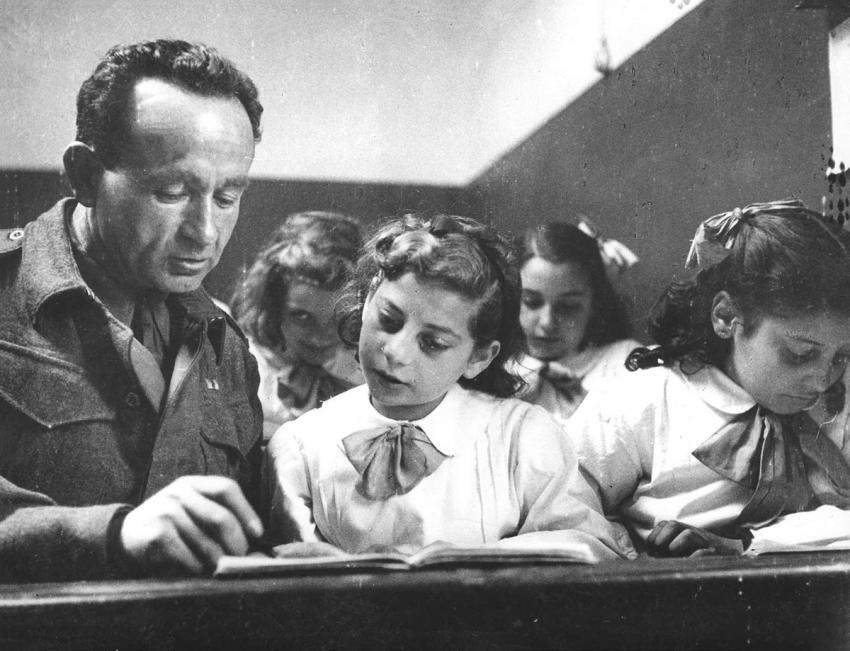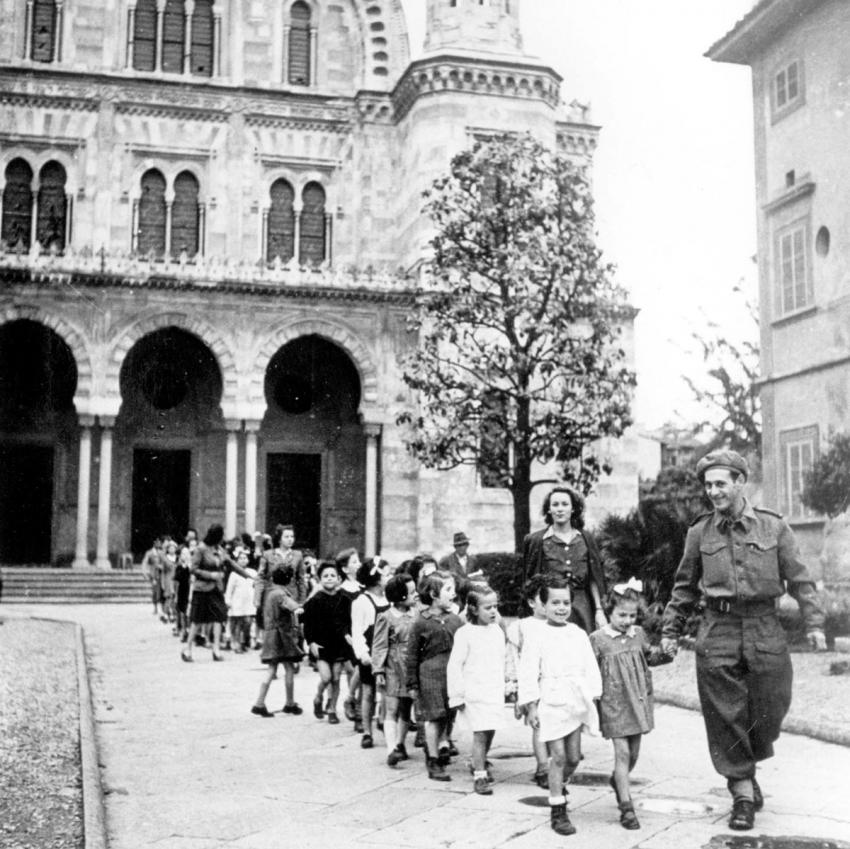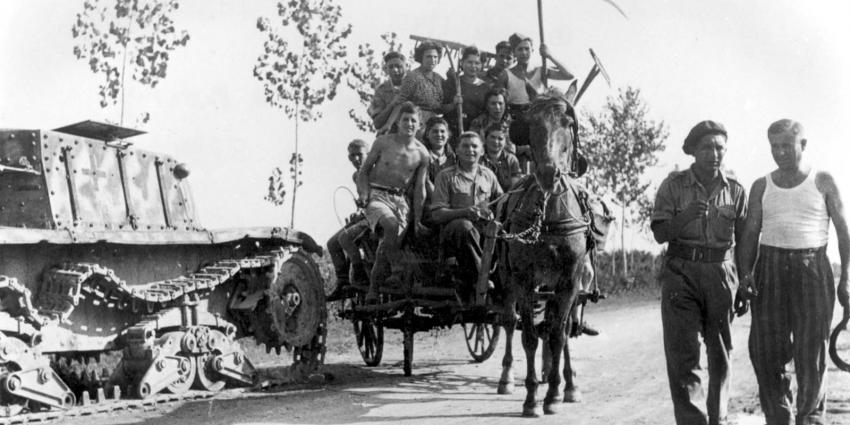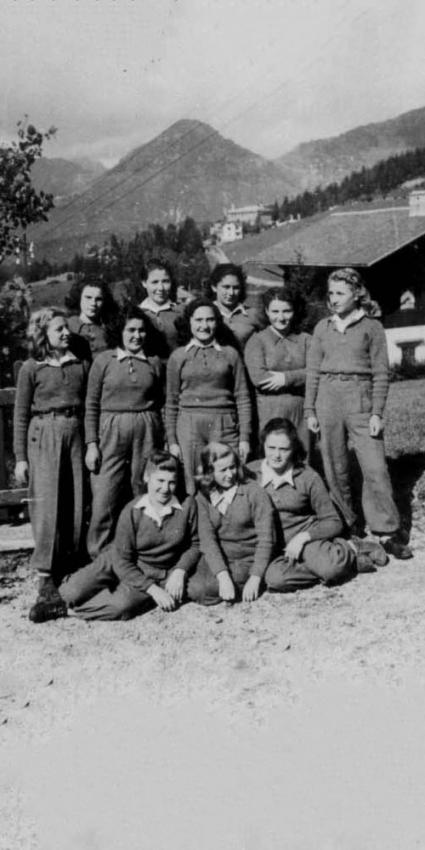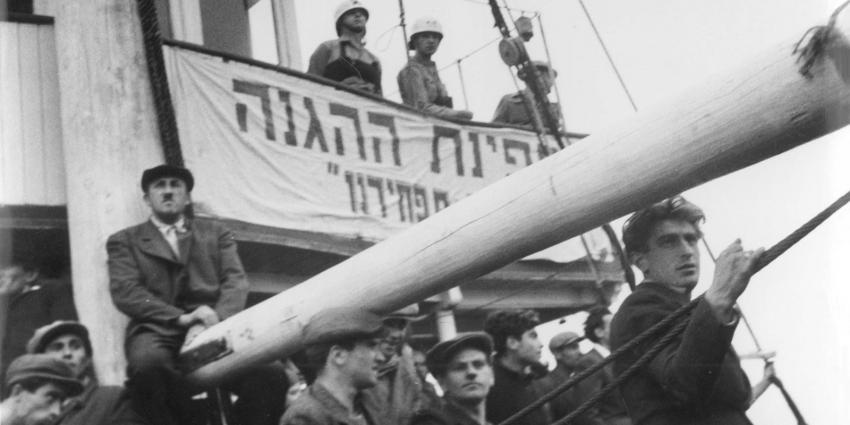Introduction
In this exhibition, we bring you the story of the many thousands of Holocaust survivors in the dozens of DP camps that operated in Italy after World War II. While these camps served as temporary transit stations for the survivors, it was there that they also started to cope with the enormity of their loss, at the same time preparing themselves for a new chapter in their lives with the help of Jewish soldiers in the Jewish Brigade and Allied forces, emissaries from Eretz Israel and aid organizations.
In July 1943 the Allies landed in Sicily; the invasion in mainland Italy began in September 1943. The Italian government signed an armistice with the Allies on September 8. As a result, Germany invaded Central and Northern Italy, where most Italian Jews resided, and started the deportations. Some 8,000 Jews were deported from Italy, mostly to Auschwitz. Most of the deportees did not survive.
Even before the end of World War II, while the deportations were taking place, Holocaust survivors encountered soldiers from Eretz Israel serving with the British Army - among them soldiers in the Jewish Brigade - in southern Italy which was under Allied control. Italy became a main way-station on the survivors’ journey to Eretz Israel.
At the end of April 1945 the German forces in Italy surrendered. Within three months, 13,000-15,000 Holocaust survivors – partisans and survivors of the ghettos and camps - had arrived in Italy, mainly from Poland, Hungary and the Baltic states.
After the Shoah, the Western Allies established DP camps in the areas of Germany, Austria and Italy where they were in control. Some 250,000 survivors of the concentration camps lived in these camps, as well as survivors who had fled eastward into the USSR and returned after the war.
In the DP camps, the survivors began the process of returning to life, while coping with the enormity of their loss. They were among the first to research the Holocaust and to commemorate its victims. They collected initial testimonies from survivors, gathered written documentation, and held memorial services for the dead. At the same time, they established theaters and orchestras, held sports events, and published more than 70 newspapers and articles in Yiddish. They studied, gained professions, raised families and prepared themselves for a new life.
Between the years 1945-1951, some 70,000 Jewish refugees and displaced persons lived on Italian soil. Approximately 50,000 of them went on to immigrate to Eretz Israel. During those years, there were some 35 DP camps in Italy. In some of the camps there were also non-Jewish refugees. Not all the camps operated over the entire period. There were small camps in which dozens of Jews lived, while others contained thousands of Jews. Yehuda Tobin, a soldier in the Jewish Brigade, wrote the following in June 1945, in a letter that he sent from Tarvisio, Italy:
Have you seen? … the faces of the survivors of the death camps? I have seen them with my own eyes… The hair of the young boys has started to grow; the heads full of stubble look so odd. The special look that I don’t have the power to describe, the facial expression. These boys… they were 10, 11, 12 when the war broke out. They “spent” most of the [last] 5-6 years in ghettos, concentration camps, forests, on the run… Fear grips me when I think about those young boys. What have they not endured? How did they manage to evade death? What kind of youth did they have?
Some 45 hachsharot (pioneer training collectives) and kibbutzim were in operation within and alongside the camps. Martin Hauser, a soldier from Eretz Israel serving in the British Army, who himself arrived there as a refugee from Germany, recalls “bringing” Eretz Israel to the survivors:
In each place, I didn’t only provide material help, I also spoke to the refugees, to the masses that I met in the camps. I told them where I come from – from Eretz Israel… I told them what the Yishuv was doing in Eretz Israel. I told them about building the land, about the kibbutzim and the colonies… that all this was waiting for them, so that they would realize that they had somewhere to go, that people were expecting them, and so that they should have the wherewithal to make the decision about their future - to come to Eretz Israel and live a free Jewish life together with us.
Related Video

